Effects of Heat Treatments on Various Characteristics of Ready-to-Eat Zucchini Purees Enriched with Anise or Fennel
Abstract
1. Introduction
2. Results and Discussion
2.1. Heat-Induced Changes
2.1.1. Cooking Loss Measurements and Calculations
2.1.2. Differential Scanning Calorimetry
2.2. Bioactive Compounds
2.3. Determination of the In Vitro Release of Phenols from Zucchini Purees
2.4. Influence of Heat Treatments on Color Evaluation of Zucchini Purees
2.5. Bostwick Consistency
2.6. Rheological Analysis
2.7. Texture Analysis
2.8. FT-IR Analysis
2.9. Sensory Analysis
3. Materials and Methods
3.1. Reagents and Chemicals
3.2. Samples Preparation
3.2.1. Preparation of the Aqueous Extracts of Galactagogue Herbs
3.2.2. Preparation of Zucchini Puree Enriched with Anise or Fennel Aqueous Extract
3.2.3. Codification
3.3. Heat-Induced Changes
3.3.1. Cooking Loss Measurements and Calculations
3.3.2. Differential Scanning Calorimetry
3.4. Global Phytochemical Characterization
3.5. Determination of the In Vitro Release of Phenols from Zucchini Purees
3.6. Color Evaluation of Zucchini Purees
3.7. Flow Behavior
3.7.1. Bostwick Consistency
3.7.2. Rheological Analysis
3.8. Texture Analysis
3.9. FT-IR Analysis
3.10. Sensory Analysis
3.11. Statistical Analysis
4. Conclusions
Author Contributions
Funding
Institutional Review Board Statement
Informed Consent Statement
Data Availability Statement
Acknowledgments
Conflicts of Interest
Sample Availability
References
- Chen, F.; Zhang, M.; Yang, C.-H. Application of ultrasound technology in processing of ready-to-eat fresh food: A review. Ultrason. Sonochem. 2020, 63, 104953. [Google Scholar] [CrossRef] [PubMed]
- World Health Organization, Regional Office for Europe. WHO European Regional Obesity Report 2022; License: CC BY-NC-SA 3.0 IGO; World Health Organization, Regional Office for Europe.: Geneva, Switzerland, 2022. Available online: https://apps.who.int/iris/handle/10665/353747 (accessed on 16 October 2022).
- Viñoles, C.; Sosa, C.; Meikle, A.; Abecia, J.-A. Embryo Losses during Nutritional Treatments in Animal Models: Lessons for Humans Embryo Losses and Nutrition in Mammals. In Handbook of Fertility: Nutrition, Diet, Lifestyle and Reproductive Health; Watson, R.R., Ed.; Academic Press: Waltham, MA, USA, 2015; pp. 99–105. [Google Scholar]
- Neves, F.I.; Silva, C.L.; Vieira, M.C. Combined pre-treatments effects on zucchini (Cucurbita pepo L.) squash microbial load reduction. Int. J. Food Microbiol. 2019, 305, 108257. [Google Scholar] [CrossRef] [PubMed]
- Rolnik, A.; Olas, B. Vegetables from the Cucurbitaceae family and their products: Positive effect on human health. Nutrition 2020, 78, 110788. [Google Scholar] [CrossRef] [PubMed]
- Shawahna, R.; Qiblawi, S.; Ghanayem, H. Which Benefits and Harms of Using Fenugreek as a Galactogogue Need to Be Discussed during Clinical Consultations? A Delphi Study among Breastfeeding Women, Gynecologists, Pediatricians, Family Physicians, Lactation Consultants, and Pharmacists. Evidence-Based Complement. Altern. Med. 2018, 2018, 2418673. [Google Scholar] [CrossRef] [PubMed]
- Shahat, A.; Ibrahim, A.Y.; Hendawy, S.F.; Omer, E.; Hammouda, F.; Abdel-Rahman, F.H.; Saleh, M.A. Chemical Composition, Antimicrobial and Antioxidant Activities of Essential Oils from Organically Cultivated Fennel Cultivars. Molecules 2011, 16, 1366–1377. [Google Scholar] [CrossRef] [PubMed]
- Tănase, L.-A.E.; Nistor, O.-V.; Andronoiu, D.-G.; Mocanu, D.-G.; Botez, E.E. Potential of herbs as galactogogues—A review. Ann. Univ. Dunarea de Jos Galati Fascicle VI—Food Technol. 2021, 45, 199–210. [Google Scholar] [CrossRef]
- Ilic, J.; Tomasevic, I.; Djekic, I. Purple eggplant and zucchini color, mechanical properties, mastication, and sensory perception influenced by boiling and grilling. J. Texture Stud. 2021, 53, 174–184. [Google Scholar] [CrossRef] [PubMed]
- Jiao, Q.; Lin, B.; Mao, Y.; Jiang, H.; Guan, X.; Li, R.; Wang, S. Effects of combined radio frequency heating with oven baking on product quality of sweet potato. Food Control 2022, 139, 109097. [Google Scholar] [CrossRef]
- Lee, S.; Choi, Y.; Jeong, H.S.; Lee, J.; Sung, J. Effect of different cooking methods on the content of vitamins and true retention in selected vegetables. Food Sci. Biotechnol. 2017, 27, 333–342. [Google Scholar] [CrossRef]
- Grujić, R.; Savanović, D. Thermal Analysis of Food Products Using Differential Scanning Calorimetry (DSC). Contemp. Mater. 2019, 10, 175–181. [Google Scholar] [CrossRef]
- Ahmed, J.; Ramaswamy, H.S. Viscoelastic properties of sweet potato puree infant food. J. Food Eng. 2006, 74, 376–382. [Google Scholar] [CrossRef]
- Unluturk, S. Evaluation of Rheological, Textural and Thermal Properties of Quinoa (Chenopodium Quinoa Willd) Based Breakfast Puree. Int. J. Food Process. Technol. 2017, 4, 22–30. [Google Scholar] [CrossRef]
- Piasecka, I.; Górska, A.; Ostrowska-Ligęza, E.; Kalisz, S. The Study of Thermal Properties of Blackberry, Chokeberry and Raspberry Seeds and Oils. Appl. Sci. 2021, 11, 7704. [Google Scholar] [CrossRef]
- Ulusoy, K.G.; Özdoğan, F.P.; Arslan, S.O.; Macit, E.; Çam, S.A.; Uysal, F.; Doğan, M.F. An Analysis of the Pharmacological Components of Herbal Teas Used for Galactagogue Effects by Gas Chromatography/Mass Spectrometry. Anatol. Clin. J. Med. Sci. 2019, 24, 101–114. [Google Scholar] [CrossRef]
- Paciulli, M.; Ganino, T.; Meza, I.G.M.; Rinaldi, M.; Rodolfi, M.; Morbarigazzi, M.; Chiavaro, E. High pressure and thermal processing on the quality of zucchini slices. Eur. Food Res. Technol. 2020, 247, 475–484. [Google Scholar] [CrossRef]
- Dutta, D.; Dutta, A.; Raychaudhuri, U.; Chakraborty, R. Rheological characteristics and thermal degradation kinetics of beta-carotene in pumpkin puree. J. Food Eng. 2006, 76, 538–546. [Google Scholar] [CrossRef]
- Fadavi, A.; Yousefi, S.; Darvishi, H.; Mirsaeedghazi, H. Comparative study of ohmic vacuum, ohmic, and conventional-vacuum heating methods on the quality of tomato concentrate. Innov. Food Sci. Emerg. Technol. 2018, 47, 225–230. [Google Scholar] [CrossRef]
- Zhang, J.; Zhang, C.; Chen, X.; Quek, S.Y. Effect of spray drying on phenolic compounds of cranberry juice and their stability during storage. J. Food Eng. 2019, 269, 109744. [Google Scholar] [CrossRef]
- Saikia, S.; Mahnot, N.K.; Mahanta, C.L. Effect of Spray Drying of Four Fruit Juices on Physicochemical, Phytochemical and Antioxidant Properties. J. Food Process. Preserv. 2014, 39, 1656–1664. [Google Scholar] [CrossRef]
- Ivanova, M.; Petkova, N.; Balabanova, T.; Ognyanov, M.; Vlaseva, R. Food design of dairy desserts with encapsulated cornelian cherry, chokeberry and blackberry juices. Ann. Univ. Dunarea Jos Galati Fascicle VI—Food Technol. 2008, 42, 137–146. [Google Scholar]
- Summers, N.; Johnsen, G.; Mogstad, A.; Løvås, H.; Fragoso, G.; Berge, J. Underwater Hyperspectral Imaging of Arctic Macroalgal Habitats during the Polar Night Using a Novel Mini-ROV-UHI Portable System. Remote Sens. 2022, 14, 1325. [Google Scholar] [CrossRef]
- Miglio, C.; Chiavaro, E.; Visconti, A.; Fogliano, V.; Pellegrini, N. Effects of Different Cooking Methods on Nutritional and Physicochemical Characteristics of Selected Vegetables. J. Agric. Food Chem. 2008, 56, 139–147. [Google Scholar] [CrossRef] [PubMed]
- Armesto, J.; Gómez-Limia, L.; Carballo, J.; Martínez, S. Impact of vacuum cooking and boiling, and refrigerated storage on the quality of galega kale (Brassica oleracea var. acephala cv. Galega). LWT 2017, 79, 267–277. [Google Scholar] [CrossRef]
- Medina-Meza, I.G.; Barnaba, C.; Villani, F.; Barbosa-Cánovas, G.V. Effects of thermal and high pressure treatments in color and chemical attributes of an oil-based spinach sauce. LWT 2015, 60, 86–94. [Google Scholar] [CrossRef]
- Ilic, J.; Tomasevic, I.; Djekic, I. Purple eggplant and zucchini color, mechanical properties, mastication, and sensory perception influenced by steaming and Sous-vide. Int. J. Gastron. Food Sci. 2022, 28, 100549. [Google Scholar] [CrossRef]
- Zhang, H.; Bhunia, K.; Kuang, P.; Tang, J.; Rasco, B.; Mattinson, D.S.; Sablani, S.S. Effects of Oxygen and Water Vapor Transmission Rates of Polymeric Pouches on Oxidative Changes of Microwave-Sterilized Mashed Potato. Food Bioprocess Technol. 2015, 9, 341–351. [Google Scholar] [CrossRef]
- Martínez-Hernández, G.B.; Artés-Hernández, F.; Gomez, P.A.; Artés, F. Quality changes after vacuum-based and conventional industrial cooking of kailan-hybrid broccoli throughout retail cold storage. LWT 2012, 50, 707–714. [Google Scholar] [CrossRef]
- Bathula, C.K.S.; Kumar, K.A.; Yadav, H.; Ramesh, S.; Shinde, S.; Shrestha, N.K.; Mallikarjuna, K.; Kim, H. Ultrasonically driven green synthesis of palladium nanoparticles by Coleus amboinicus for catalytic reduction and Suzuki-Miyaura reaction. Colloids Surfaces B Biointerfaces 2020, 192, 111026. [Google Scholar] [CrossRef]
- Kasim, R.; Kasim, M.U. Color Changes and Sugar Accumulation in Pods of Green Bean (Phaseolus vulgaris L. Cv. Gina) during Development. Philipp. Agric. Sci. 2015, 98, 286–292. [Google Scholar]
- Pathare, P.; Opara, U.L.; Al-Said, F.A.-J. Colour Measurement and Analysis in Fresh and Processed Foods: A Review. Food Bioprocess Technol. 2012, 6, 36–60. [Google Scholar] [CrossRef]
- Colin-Henrion, M.; Cuvelier, G.; Renard, C. Texture of pureed fruit and vegetable foods. Stewart Postharvest Rev. 2007, 3, 1–14. [Google Scholar] [CrossRef]
- Wibowo, S.; Afuape, A.L.; De Man, S.; Bernaert, N.; Van Droogenbroeck, B.; Grauwet, T.; Van Loey, A.; Hendrickx, M. Thermal processing of kale purée: The impact of process intensity and storage on different quality related aspects. Innov. Food Sci. Emerg. Technol. 2019, 58, 102213. [Google Scholar] [CrossRef]
- Espinosa-Muñoz, L.; Renard, C.; Symoneaux, R.; Biau, N.; Cuvelier, G. Structural parameters that determine the rheological properties of apple puree. J. Food Eng. 2013, 119, 619–626. [Google Scholar] [CrossRef]
- Rao, M.A. Rheology of Fluid and Semisolid Foods: Principles and Applications; Springer: New York, NY, USA, 2010. [Google Scholar]
- Sharma, M.; Kristo, E.; Corredig, M.; Duizer, L. Effect of hydrocolloid type on texture of pureed carrots: Rheological and sensory measures. Food Hydrocoll. 2017, 63, 478–487. [Google Scholar] [CrossRef]
- Olaru, L.D.; Nistor, O.-V.; Andronoiu, D.G.; Ghinea, I.O.; Barbu, V.; Botez, E. Effect of added hydrocolloids on ready-to-eat courgette (Cucurbita pepo) puree ohmically treated. J. Food Sci. Technol. 2021, 59, 388–396. [Google Scholar] [CrossRef] [PubMed]
- Jafar, N.; Murtaza, G.; Nazir, G.; Rehman, A. Investigation to Understand the Co Ions Inclusion in Ba3SnO Antiperovskites Structure. J. Mater. Phys. Sci. 2021, 2, 78–87. [Google Scholar] [CrossRef]
- Padman, A.J.; Henderson, J.; Hodgson, S.; Rahman, P.K.S.M. Biomediated synthesis of silver nanoparticles using Exiguobacterium mexicanum. Biotechnol. Lett. 2014, 36, 2079–2084. [Google Scholar] [CrossRef]
- Mishra, V.; Kumar, R. Graft Copolymerization of Carboxymethylcellulose: An Overview. Trends Carbohydr. Res. 2012, 4, 1–17. [Google Scholar]
- Salvador, A.; Sanz, T. Influence of hydrocolloid type on structural breakdown of vegetable purees during in vitro digestion. Int. J. Food Sci. Technol. 2020, 55, 1992–2001. [Google Scholar] [CrossRef]
- Sengun, I.Y.; Turp, G.Y.; Icier, F.; Kendirci, P.; Kor, G. Effects of ohmic heating for pre-cooking of meatballs on some quality and safety attributes. LWT 2013, 55, 232–239. [Google Scholar] [CrossRef]
- Escoto, D.F.; Ramborger, B.P.; Gayer, M.C.; Rodrigues, D.T.; Gasparoto Denardin, E.L.; Roehrs, R.; Roehrs, M. Lycopene: Food Sources, Potential Role in Human Health and Antioxidant Effects; Bailey, J.R., Ed.; Nova Science Publishers: New York, NY, USA, 2015. [Google Scholar]
- Minekus, M.; Alminger, M.; Alvito, P.; Ballance, S.; Bohn, T.; Bourlieu, C.; Carrière, F.; Boutrou, R.; Corredig, M.; Dupont, D.; et al. A standardised static in vitro digestion method suitable for food—An international consensus. Food Funct. 2014, 5, 1113–1124. [Google Scholar] [CrossRef] [PubMed]
- NJT, E.; OM, A. Quality Attributes of Jams and Marmalades Produced from Some Selected Tropical Fruits. J. Food Process Technol. 2019, 10, 790. [Google Scholar] [CrossRef]
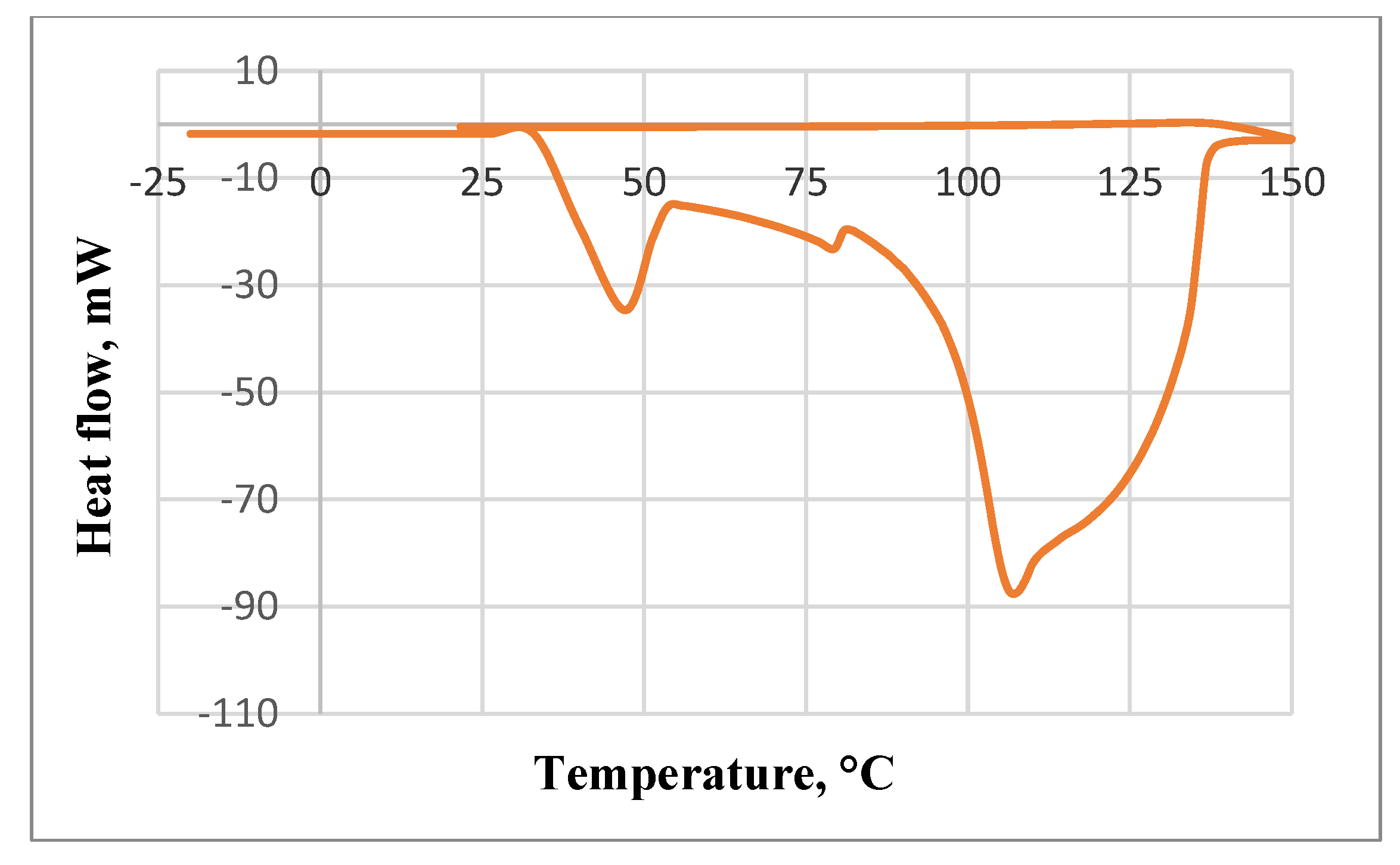

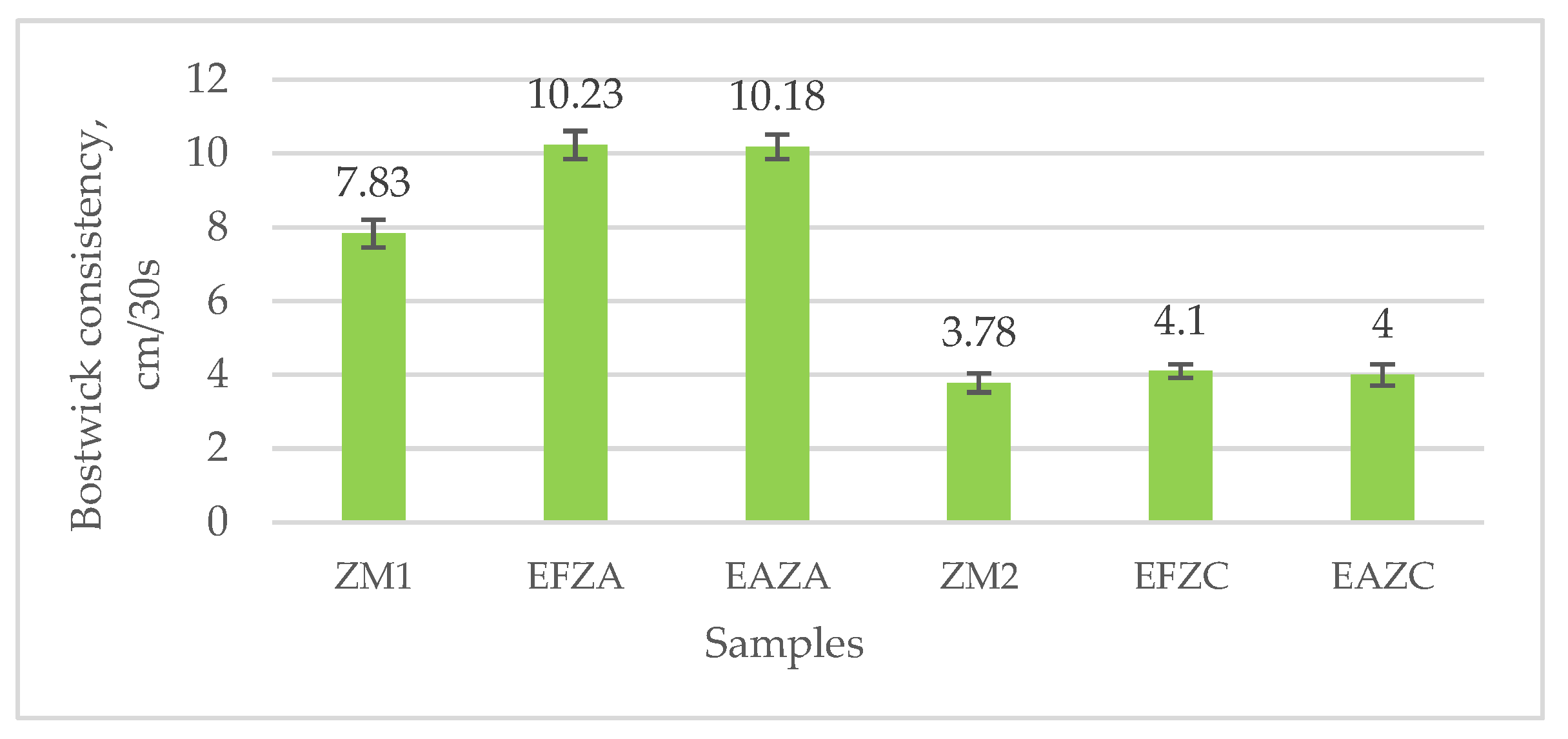
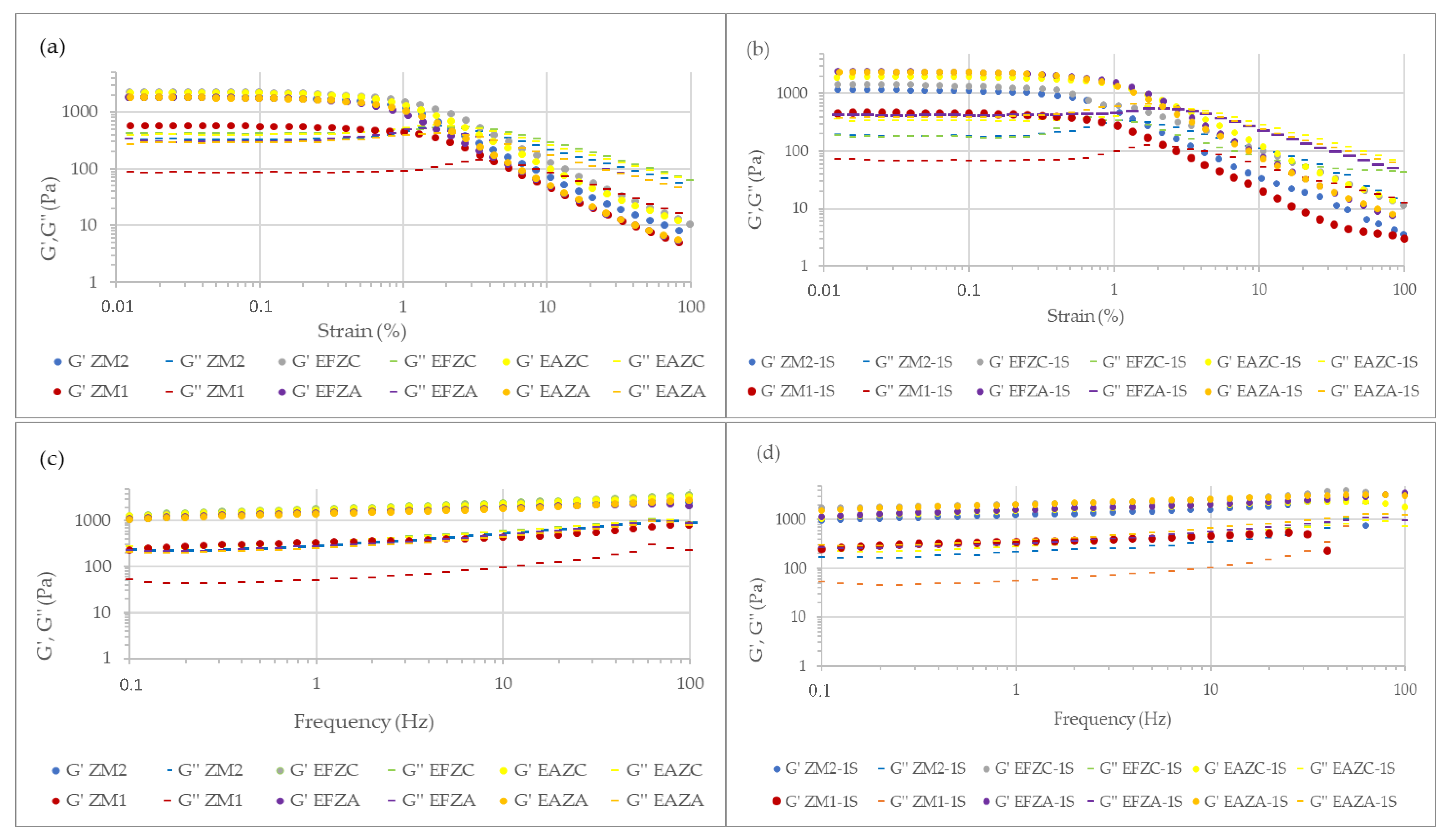
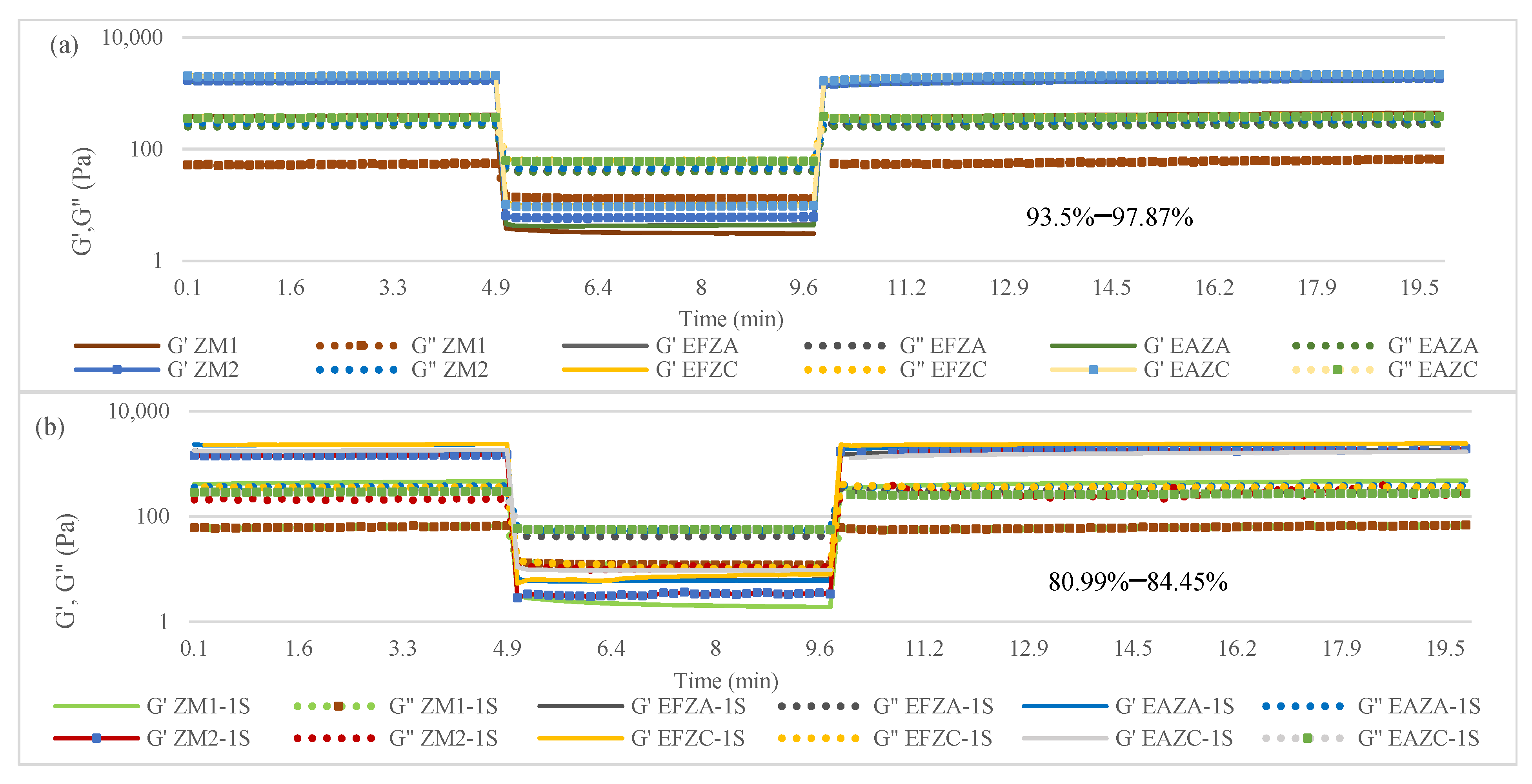
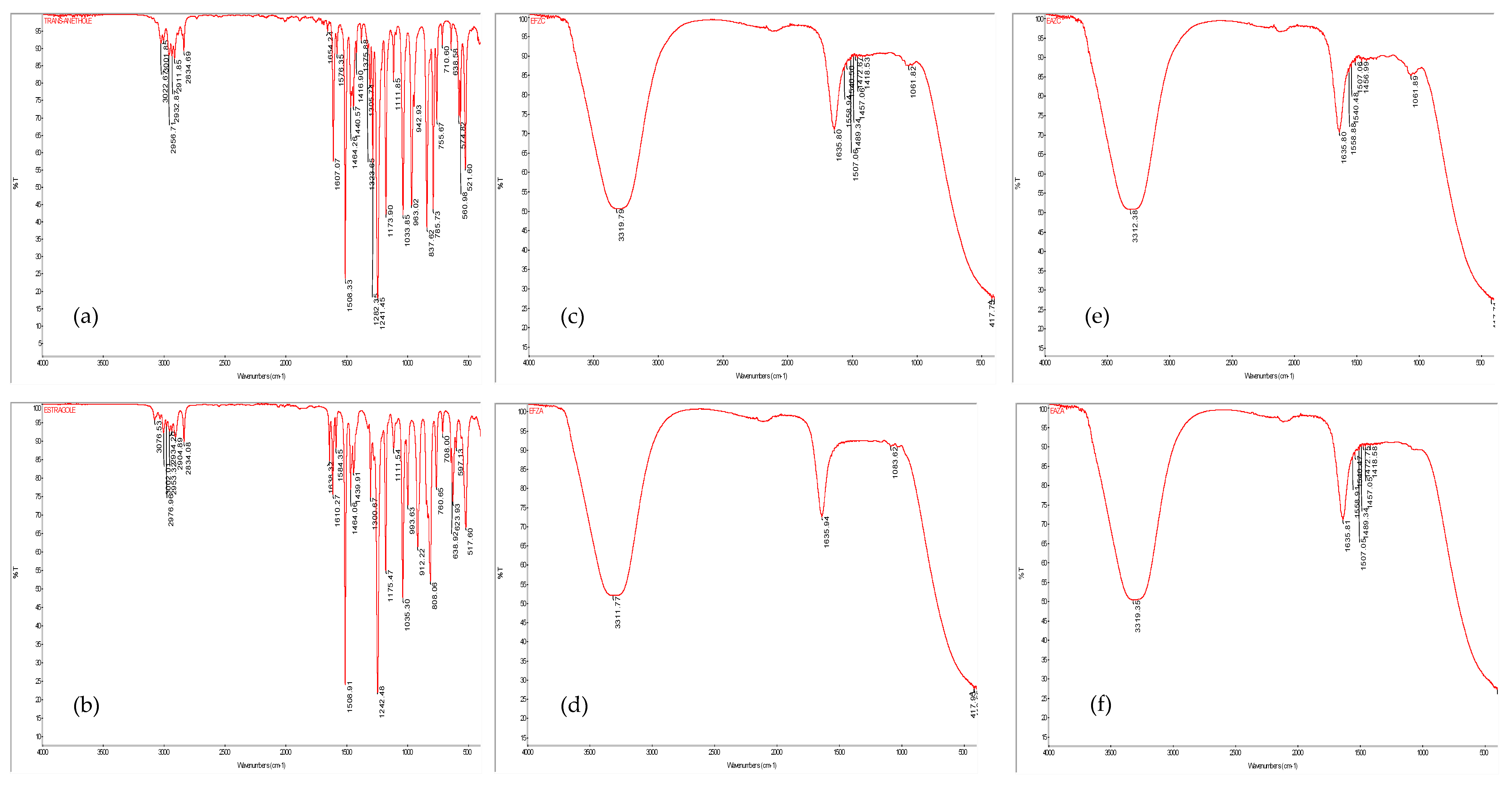

| Parameters | Hot Air Convection | Steam Convection |
|---|---|---|
| Cooking loss, % | 34.36 ± 0.46 A | 0.57 ± 0.09 B |
| Cooking yield, % | 65.64 ± 0.46 B | 99.43 ± 0.09 A |
| T0 | ||||||
|---|---|---|---|---|---|---|
| Steam Convection | Hot Air Convection | |||||
| ZM1 | EFZA | EAZA | ZM2 | EFZC | EAZC | |
| Antioxidant Activity, µM Trolox/g DW | 6.62 ± 1.71 D | 29.64 ± 1.43 C | 38.32 ± 3.85 B | 33.76 ± 1.92 B, C | 49.55 ± 0.34 A | 55.1 ± 3.75 A |
| TPC, mg GAE/g DW | 17.27 ± 0.11 E | 17.96 ± 0.11 D, E | 20.1 ± 0.17 C | 18.3 ± 0.45 D | 22.11 ± 0.39 B | 25.68 ± 0.63 A |
| TFC, mg EQ/g DW | 15.89 ± 0.99 B, C | 14.76 ± 1.21 B, C | 14.3 ± 0.66 C | 17.71 ± 0.59 B | 21.43 ± 1.39 A | 24.37 ± 1.68 A |
| BC, mg/g DW | 2.97 ± 0.27 C | 3.07 ± 0.24 C | 2.94 ± 0.30 C | 4.64 ± 0.07 B | 4.91 ± 0.0 B | 5.93 ± 0.26 A |
| LYC, mg/g DW | 1.65 ± 0.13 D | 1.76 ± 0.02 C,D | 1.67 ± 0.18 D | 2.09 ± 0.05 B,C | 2.17 ± 0.02 B | 2.69 ± 0.19 A |
| TC, mg/g DW | 3.11 ± 0.24 C | 3.29 ± 0.27 C | 3.08 ± 0.33 C | 5.72 ± 0.06 B | 5.33 ± 0.33 B | 7.57 ± 0.08 A |
| Chl, µg/g DW | 1.41 ± 0.00 B | 1.51 ± 00 A, B | 1.41 ± 0.00 B | 1.73 ± 00 A | 1.44 ± 0.00 B | 1.51 ± 0.00 A, B |
| T7 | ||||||
| Steam Convection | Hot Air Convection | |||||
| Antioxidant Activity, µM Trolox/g DW | 33.8 ± 0.75 C | 65.38 ± 1.12 B | 65.54 ± 0.00 B | 11.49 ± 4.88 C | 69.85 ± 24.04 A, B | 96.44 ± 6.42 A |
| TPC, mg GAE/g DW | 15.19 ± 0.2 E | 22.33 ± 0.09 C | 18.11 ± 0.13 D | 26.8 ± 0.11 B | 28.5 ± 1.55 B | 34.09 ± 0.45 A |
| TFC, mg EQ/g DW | 17.5 ± 1.38 D, E | 20.35 ± 1.3 C, D | 14.67 ± 0.22 E | 23.48 ± 1.18 B, C | 24.23 ± 2.6 B | 31 ± 0.4 A |
| BC, mg/g DW | 2.67 ± 0.00 E | 3.09 ± 0.05 D | 2.44 ± 0.11 F | 5.7 ± 0.1 B | 4.12 ± 0.1 C | 7.63 ± 0.05 A |
| LYC, mg/g DW | 1.42 ± 0.02 D | 2.15 ± 0.06 C | 1.72 ± 0.07 D | 2.96 ± 0.07 B | 2.65 ± 0.11 B | 4.61 ± 0.3 A |
| TC, mg/g DW | 2.8 ± 0.02 E | 3.09 ± 0.00 D | 2.35 ± 0.11 F | 5.02 ± 0.07 B | 4.1 ± 0.09 C | 6.4 ± 0.29 A |
| Chl, µg/g DW | 1.37 ± 0.00 B | 1.37 ± 0.00 B | 1.33 ± 0.00 B | 1.34 ± 0.00 B | 1.34 ± 0.00 B | 1.50 ± 0.00 A |
| T0 | |||||
|---|---|---|---|---|---|
| Raw | EFZA | EAZA | EFZC | EAZC | |
| L* | 59.08 ± 0.21 A | 52.09 ± 0.19 B | 52.29 ± 0.64 B | 52.97 ± 0.73 B | 53.2 ± 0.02 B |
| a* | −6.11 ± 0.04 C | −7.28 ± 0.02 E | −6.99 ± 0.02 D | −5.13 ± 0.03 B | −4.73 ± 0.01 A |
| b* | 30.92 ± 0.32 B | 32.56 ± 0.30 A | 29.30 ± 0.57 C | 28.49 ± 0.34 C | 30.69 ± 0.09 B |
| ΔE | - | 7.28 ± 0.11 A | 7.05 ± 0.74 A,B | 6.65 ± 0.54 A, B | 6.04 ± 0.02 B |
| C* | 31.51 ± 0.43 A | 31.36 ± 0.28 A | 30.12 ± 0.55 C | 28.95 ± 0.34 D | 31.05 ± 0.09 B |
| H° | 101.18 ± 0.78 B | 102.61 ± 0.25 B | 103.42 ± 0.49 B | 100.21 ± 0.57 A | 98.77 ± 0.81 C |
| BI | 61.76 ± 0.87 A | 79.41 ± 0.82 A | 66.47 ± 0.89 C | 65.29 ± 2.44 C | 73.59 ± 0.32 B |
| WI | 61.65 ± 0.47 B | 58.38 ± 0.01 C | 56.43 ± 0.24 B | 55.23 ± 0.80 A | 156.17 ± 0.03 A, B |
| YI | 74.76 ± 0.59 A | 89.29 ± 0.49 A | 80.04 ± 0.57 B | 76.84 ± 1.96 C | 82.41 ± 0.21 B |
| T7 | |||||
| L* | 59.08 ± 0.21 A | 31.96 ± 0.24 B | 32.37 ± 0.15 B | 30.35 ± 0.61 C | 29.42 ± 0.15 D |
| a* | −6.11 ± 0.04 C | 34.86 ± 0.49 B | 35.18 ± 0.36 A,B | 33.51 ± 0.48 C | 35.84 ± 0.04 A |
| b* | 30.92 ± 0.32 B | 25.54 ± 0.21 B, C | 26.55 ± 0.06 B | 21.82 ± 0.94 D | 24.74 ± 0.02 C |
| ΔE | - | 49.43 ± 0.25 B | 49.37 ± 0.38 B | 49.78 ± 0.56 B | 51.75 ± 0.12 A |
| C* | 31.51 ± 0.43 A | 43.21 ± 0.52 A | 44.07 ± 0.25 A | 39.98 ± 0.91 B | 43.55 ± 0.04 A |
| H° | 101.18 ± 0.78 B | 36.22 ± 0.31 C | 37.04 ± 0.22 C | 33.07 ± 0.35 A | 34.61 ± 0.43 B |
| BI | 61.76 ± 0.87 A | 203.53 ± 0.48 B | 210 ±1.28 A, B | 184.12 ± 1.76 C | 220.59 ± 1.67 A |
| WI | 61.35 ± 0.47 B | 80.60 ± 0.07 A | 80.81 ± 0.26 A | 80.31 ± 0.98 A | 82.93 ± 0.15 B |
| YI | 74.76 ± 0.59 A | 114.16 ± 0.08 A | 117.54 ± 0.28 A | 102.89 ± 0.47 B | 120.18 ± 0.69 A |
| T0 | ||||||
|---|---|---|---|---|---|---|
| ZM1 | EFZA | EAZA | ZM2 | EFZC | EAZC | |
| Firmness, N | 0.75 ± 0.03 A | 0.5 ± 0.02 C | 0.51 ± 0.02 C | 0.72 ± 0.01 A | 0.52 ± 0.03 C | 0.60 ± 0.03 B |
| Adhesiveness, mJ | 1.19 ± 0.31 A, B | 1.36 ± 0.02 A, B | 1.87 ± 0.61 A, B | 1.05 ± 0.11 B | 2.21 ± 0.55 A | 2.22 ± 0.31 A |
| Cohesiveness | 0.66 ± 0.06 A | 0.64 ± 0.02 A | 0.57 ± 0.09 A | 0.66 ± 0.06 A | 0.68 ± 0.11 A | 0.65 ± 0.03 A |
| Springiness, mm | 7.65 ± 0.58 A | 8.66 ± 0.48 A | 8.17 ± 0.38 A | 8.49 ± 0.73 A | 8.32 ± 0.36 A | 8.35 ± 0.21 A |
| T7 | ||||||
| Firmness, N | 0.65 ± 0.04 A | 0.52 ± 0.06 B | 0.50 ± 0.02 B | 0.64 ± 0.04 A | 0.55 ± 0.01 A, B | 0.59 ± 0.06 A, B |
| Adhesiveness, mJ | 1.39 ± 0.47 B, C | 1.81 ± 0.24 B, C | 1.91 ± 0.19 B, C | 1.29 ± 0.14 C | 2.17 ± 0.09 B | 3.52 ± 0.42 A |
| Cohesiveness | 0.64 ± 0.06 A, B | 0.58 ± 0.03 B, C | 0.49 ± 0.04 C | 0.76 ± 0.12 A | 0.66 ± 0.01 A, B | 0.58 ± 0.04 B, C |
| Springiness, mm | 7.37 ± 0.97 A | 8.26 ± 0.26 A | 7.4 ± 0.48 A | 8.43 ± 0.43 A | 8.62 ± 0.21 A | 8.44 ± 0.41 A |
Publisher’s Note: MDPI stays neutral with regard to jurisdictional claims in published maps and institutional affiliations. |
© 2022 by the authors. Licensee MDPI, Basel, Switzerland. This article is an open access article distributed under the terms and conditions of the Creative Commons Attribution (CC BY) license (https://creativecommons.org/licenses/by/4.0/).
Share and Cite
Tănase, L.-A.; Nistor, O.-V.; Mocanu, G.-D.; Andronoiu, D.-G.; Cîrciumaru, A.; Botez, E. Effects of Heat Treatments on Various Characteristics of Ready-to-Eat Zucchini Purees Enriched with Anise or Fennel. Molecules 2022, 27, 7964. https://doi.org/10.3390/molecules27227964
Tănase L-A, Nistor O-V, Mocanu G-D, Andronoiu D-G, Cîrciumaru A, Botez E. Effects of Heat Treatments on Various Characteristics of Ready-to-Eat Zucchini Purees Enriched with Anise or Fennel. Molecules. 2022; 27(22):7964. https://doi.org/10.3390/molecules27227964
Chicago/Turabian StyleTănase (Butnariu), Luiza-Andreea, Oana-Viorela Nistor, Gabriel-Dănuț Mocanu, Doina-Georgeta Andronoiu, Adrian Cîrciumaru, and Elisabeta Botez. 2022. "Effects of Heat Treatments on Various Characteristics of Ready-to-Eat Zucchini Purees Enriched with Anise or Fennel" Molecules 27, no. 22: 7964. https://doi.org/10.3390/molecules27227964
APA StyleTănase, L.-A., Nistor, O.-V., Mocanu, G.-D., Andronoiu, D.-G., Cîrciumaru, A., & Botez, E. (2022). Effects of Heat Treatments on Various Characteristics of Ready-to-Eat Zucchini Purees Enriched with Anise or Fennel. Molecules, 27(22), 7964. https://doi.org/10.3390/molecules27227964








